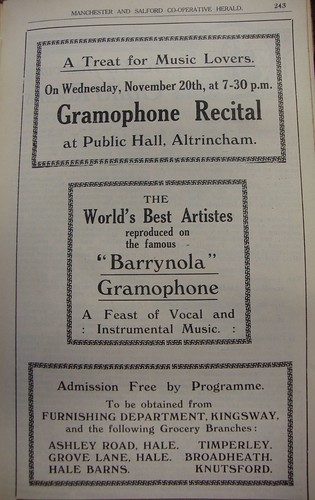Was very taken with this old advert for the latest spring fashions for 1939. Surprisingly it is in colour rather than the black & white line drawings I've usually discovered. It deserves a reprise.
So what does the advertisement say. It speaks aspirational, you could be in a P.G.Wodehouse novel with your pipe, matching handkerchief in the top pocket and a modern camera. Personally I wouldn't be my choice of a check jacket going with baggy stripped trousers. I'm no fashion expert but that looks like a windowpane check which you don't see much of these days clashing with a chalk stripe trousers. The lady looks jolly sporty as well. Stood next to the daffodils for the spring connection in a dashing hat and a lovely coat again in a check. It has an interesting four button arrangement.

No doubt if you could afford a new spring outfit you'd have looked pretty spiffy in this. There is a whole area to explore in suits, class and downright snobbery but I will leave that to others.
So did people go down to the shops or the local co-op store in outfits
like this? Err..maybe or maybe not? It's just that photographs from this period of people going about their everyday chores look pretty dreary.
However the photo on the left is historian and curator Lucy Worsley
dressed up like 1934. If you've seen any of her BBC Tv programmes you'll
know she likes getting into character by wearing outfits relating to
the age she's presenting. So there is possibly one from the 1930's coming on schedule as this was published this month.
Recommended viewing and better check
Lucy Worsley on the web. Enjoyable history not just entertainment but you get facts even a jaded viewer will find riveting.
The next picture is a section of a poster from around 1935 by F.C.
Harrison (that's Frederick Clifford, painter and illustrator 1901 -
1984).
He worked freelance, and this is one for the Empire Marketing Board currently on display at Manchester Art Gallery. The lady has bought a pineapple which was a luxury. So back from the shops on a winter's day dressed in a very long scarf, large possibly fleece lined gloves, and the snug hat. Not very colour co-ordinated but maybe that's the illustrator trying to attract our attention.
Further reading : Empire Marketing Board
posters on Flickr thanks to Manchester City Galleries.









